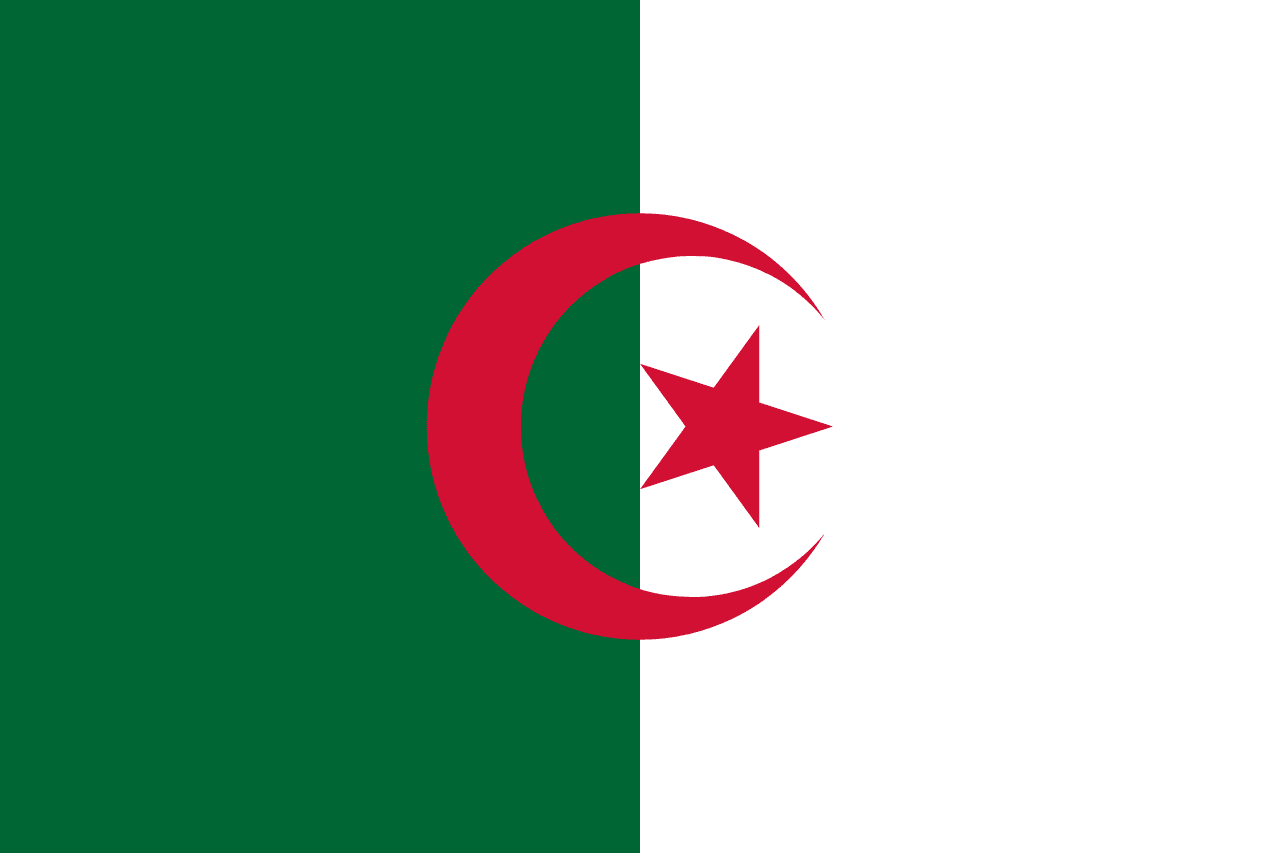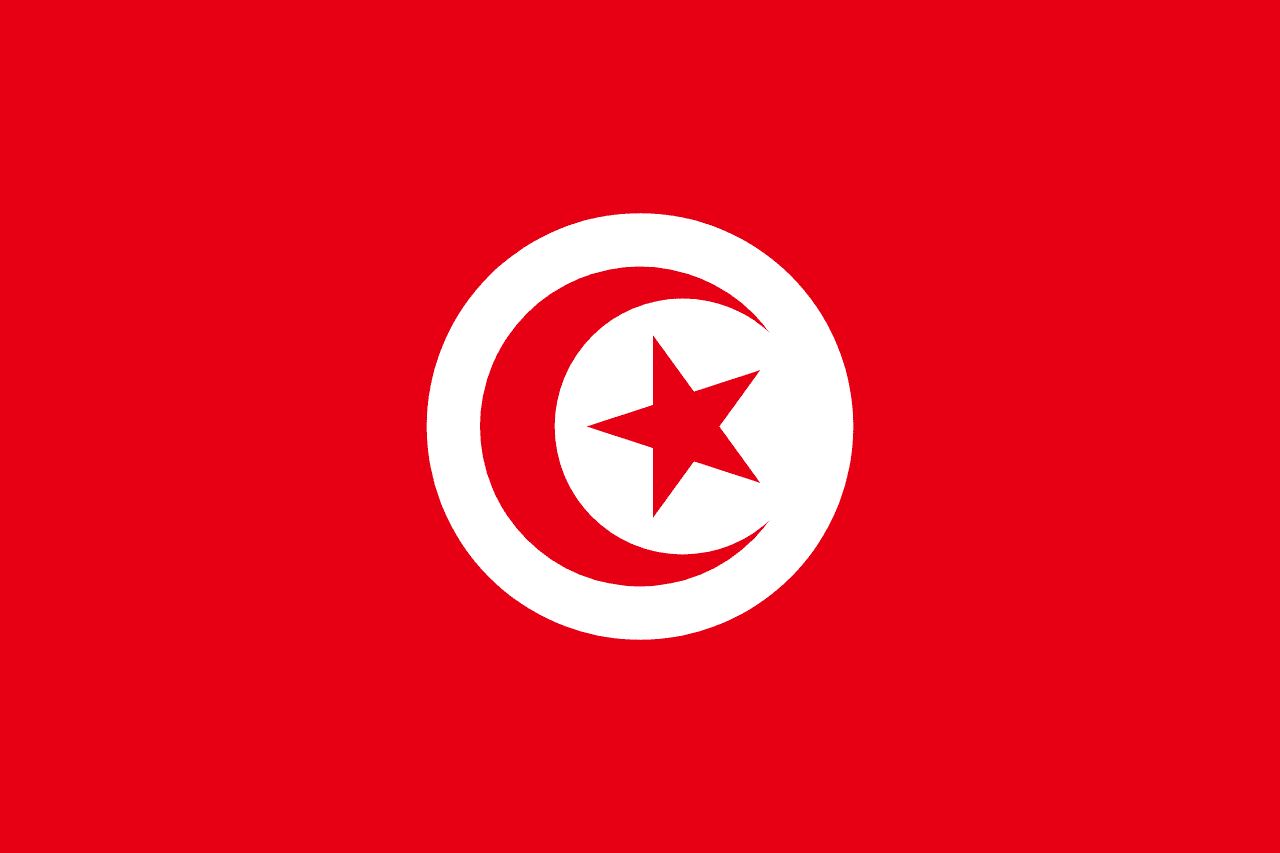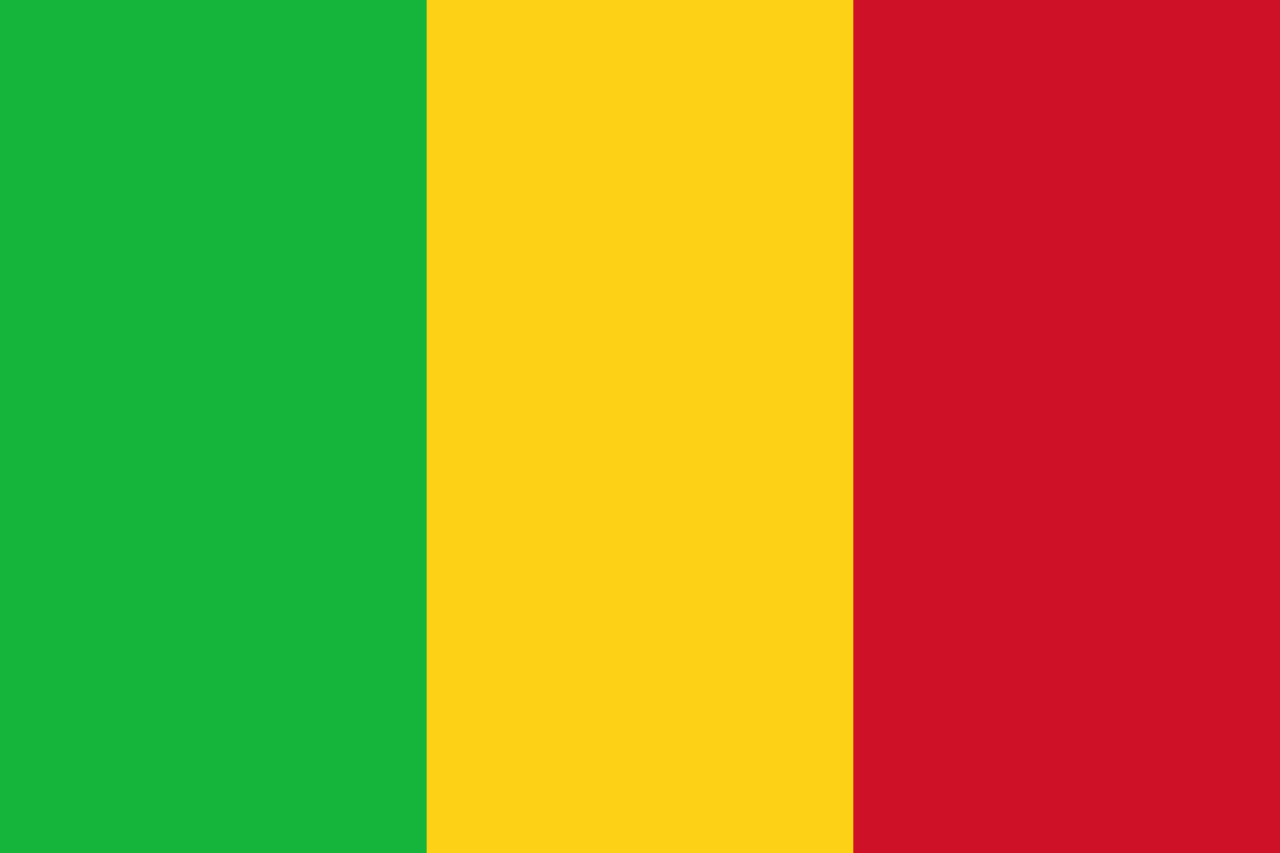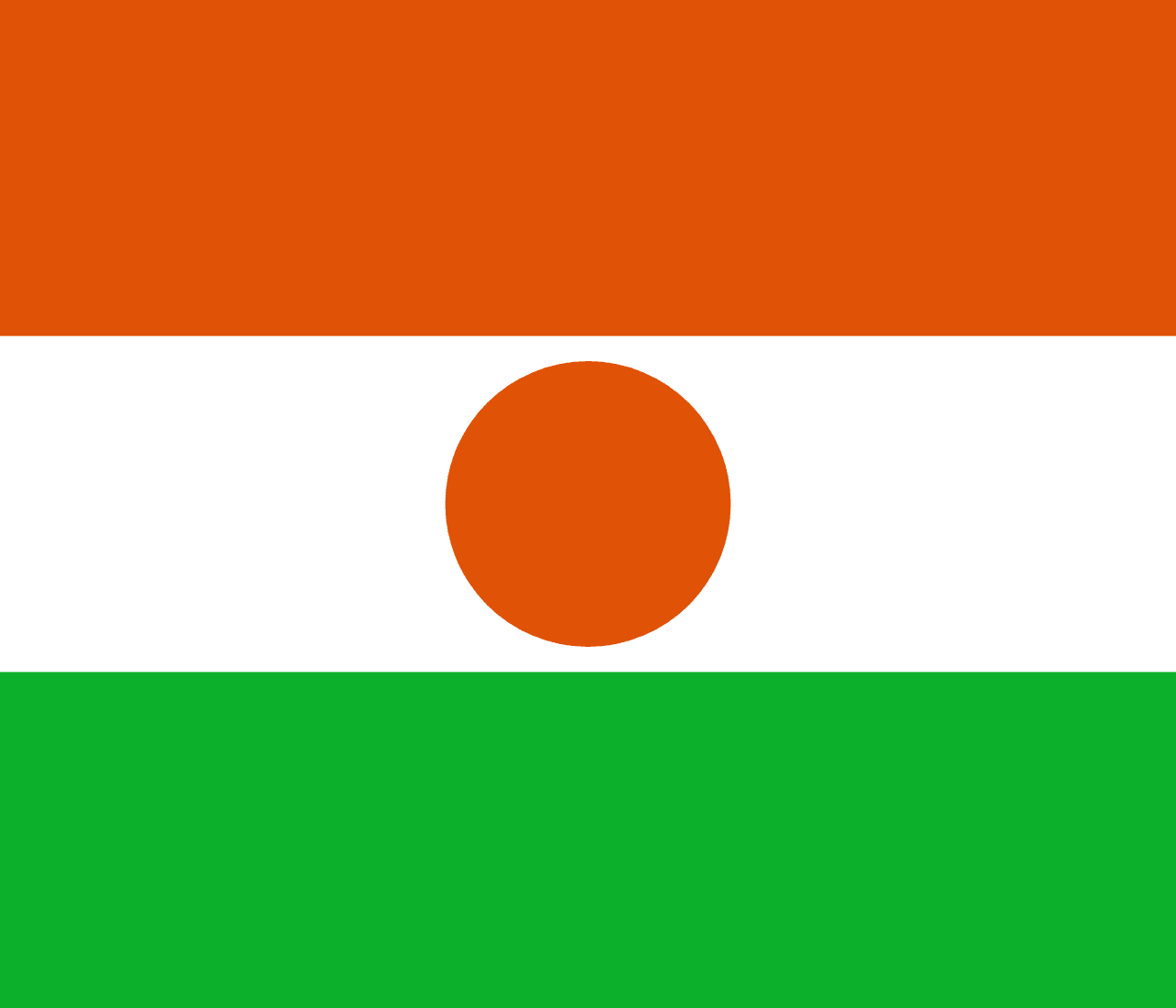Algeria Flag Meaning
Two equal vertical stripes of green and white with a red crescent and five-pointed star centered on the dividing line, representing Islam, peace, and the blood of martyrs who died for independence.
- Continent
- Africa
- Adopted
- 1962
- Ratio
- 2:3
- Colors
- green, white, red
- Designer
- Émilie Busquant

Symbolism
Green Stripe: Represents Islam, the predominant religion of Algeria, and symbolizes the country's Islamic heritage and identity. Green is considered the sacred color of Islam and paradise.
White Stripe: Symbolizes peace, purity, and the snow of the Atlas Mountains. It also represents the hope for a peaceful future and the purity of the revolution's ideals.
Red Crescent: An Islamic symbol representing faith and serving as a guide for the faithful. The crescent is a traditional symbol found on many Islamic flags and represents the Islamic faith of the Algerian people.
Red Five-Pointed Star: Represents the five pillars of Islam (faith, prayer, charity, fasting, pilgrimage) and serves as a guiding light for Muslims, emphasizing Algeria's Islamic identity.
Red Color: Symbolizes the blood shed by the martyrs (shahids) who died fighting for Algeria's independence from French colonial rule, honoring their sacrifice for national freedom.
History
- 1830-1962: Algeria was under French colonial rule, with French flags and symbols imposed while Algerian cultural and religious identity was suppressed.
- 1920s-1930s: Early nationalist movements began using green and white colors in various combinations, drawing on Islamic symbolism and Pan-Arab color traditions.
- 1954: The National Liberation Front (FLN) adopted a flag design with green and white stripes and red crescent and star, created by Émilie Busquant, wife of FLN leader Messali Hadj.
- 1954-1962: During the Algerian War of Independence, the flag became a powerful symbol of resistance against French colonial rule and rallied support for the independence movement.
- July 3, 1962: Algeria gained independence from France, and the FLN flag was officially adopted as the national flag of the newly independent People's Democratic Republic of Algeria.
- 1963: The flag was formally codified in Algeria's first constitution, establishing its official status and specifications for government and civilian use.
- 1962-Present: The flag has remained unchanged since independence, surviving various political changes and serving as a unifying symbol of Algerian national identity.
Trivia
- The flag was designed by Émilie Busquant, making her one of the few women to design a national flag, though this fact was not widely known for many years.
- During the independence war, possession of the Algerian flag was punishable by death under French colonial law, making it a powerful symbol of resistance.
- The green and white stripes are exactly equal in width, symbolizing the balance between Islamic faith and the hope for peace in the new nation.
- Algeria's flag shares the Islamic crescent and star motif with Turkey and Pakistan, reflecting the common Islamic heritage among these nations.
- The red crescent and star are positioned precisely on the dividing line between the green and white stripes, making the design perfectly balanced.
- The flag was first raised over independent Algeria at the government palace in Algiers on July 5, 1962, during the independence celebrations.
- Algerian football fans make the flag highly visible at international matches, particularly during the Africa Cup of Nations and World Cup tournaments.
- The flag appears on Algerian dinars and is featured prominently in government buildings, schools, and public spaces throughout the country.
- During the Algerian Civil War (1990s), the flag remained a unifying symbol despite political divisions, representing national unity above partisan politics.
- The flag's colors influenced the design of other North African independence movements and pan-Arab nationalist symbols in the region.
- Algerian immigrants in France often display the flag during cultural celebrations, maintaining connection to their homeland despite living abroad.
- The flag protocol requires it to be treated with great respect, and burning or desecrating the Algerian flag is a criminal offense under national law.
- On Independence Day (July 5) and Revolution Day (November 1), the flag is displayed throughout Algeria, from government buildings to private homes.
- The flag appears on Algerian military uniforms and equipment, symbolizing the armed forces' role in defending national sovereignty and independence.
- During the 2019 Hirak protest movement, demonstrators carried the national flag while calling for political reforms, showing its continued role as a symbol of popular will.
Related Countries

Morocco
Africa
A red field with a green interlaced pentagram (Seal of Solomon) in the center. The flag reflects Morocco’s dynastic traditions and Islamic heritage.

Tunisia
Africa
A red field with a white circle in the center containing a red crescent moon and five-pointed star, representing the blood shed for independence, purity and peace, Islam, and the unity of all Muslims, based on the Ottoman flag but with distinct Tunisian characteristics.

Mali
Africa
Three vertical stripes of green, yellow, and red representing Mali's agricultural potential, mineral wealth, and the blood of independence fighters, connecting modern Mali to both Pan-African ideals and its legacy as home to medieval Africa's greatest empires.

Niger
Africa
Three horizontal stripes of orange, white, and green with an orange circle centered on the white stripe, representing the Sahara Desert, the Niger River, and the fertile south, with the sun symbolizing hope and determination.

Spain
Europe
Two horizontal red stripes separated by a yellow stripe twice their width, with the national coat of arms on the yellow stripe toward the hoist, representing the historical kingdoms of Castile and Aragon and the traditional colors that have symbolized Spain for centuries.

Malta
Europe
Two vertical stripes of white and red with the George Cross in the upper left corner, representing Malta's courage during World War II and its historical significance in the Mediterranean.